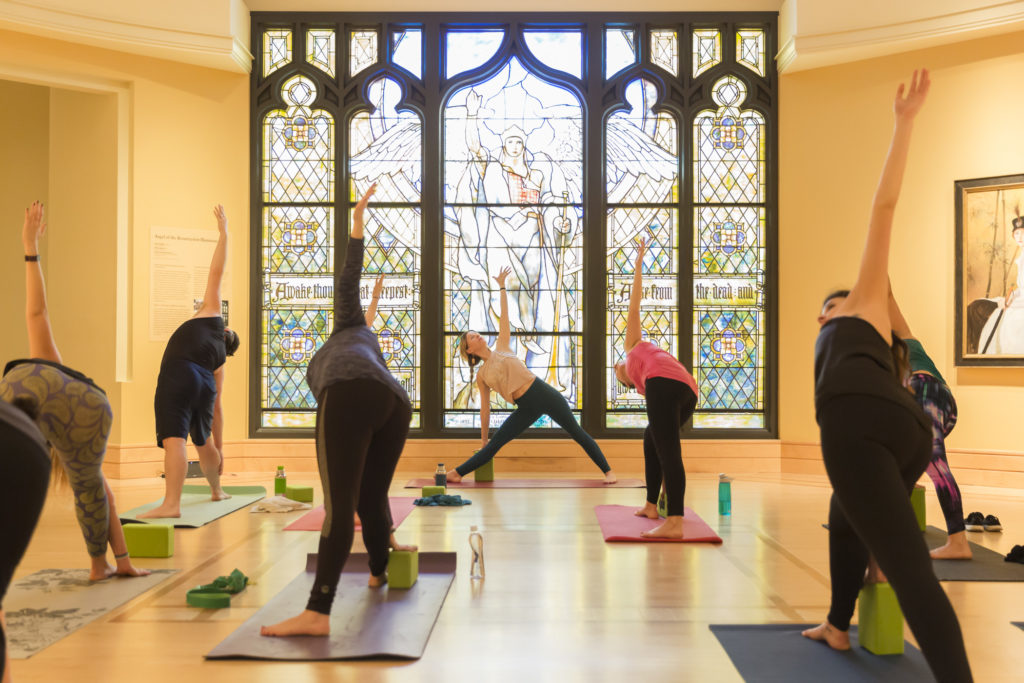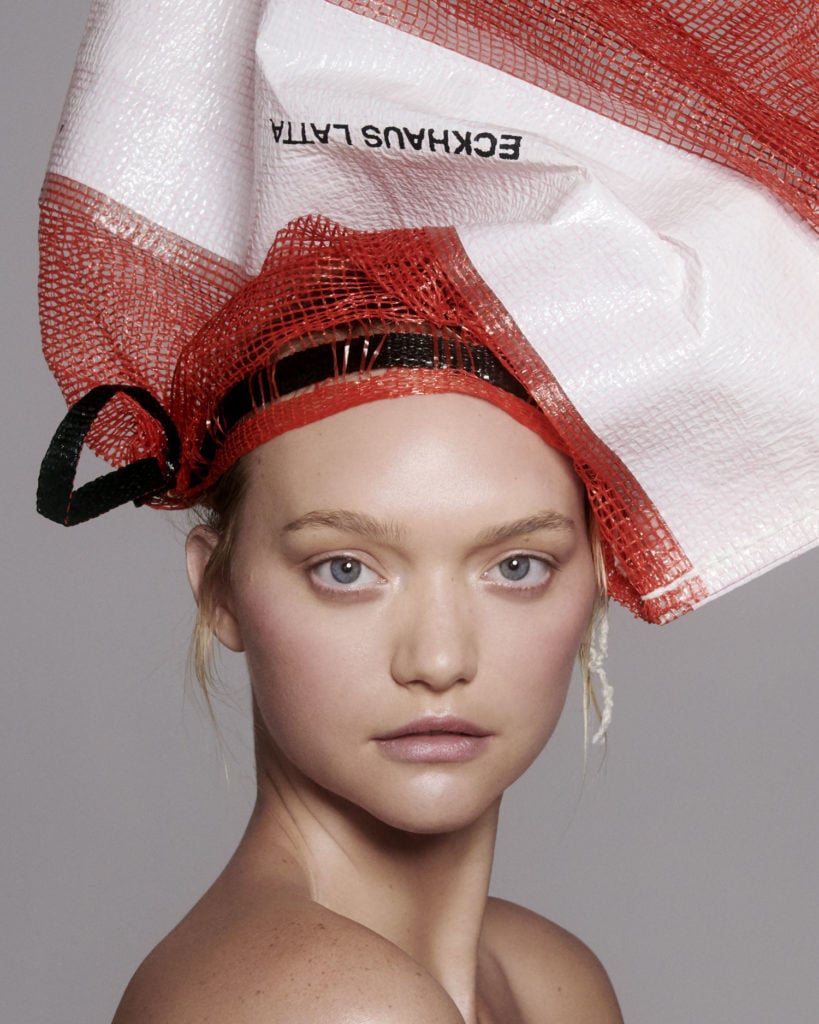Opinion
The Gray Market: What the Debut of a $5 Billion ‘Post-Shopping Mall’ Does—and Doesn’t—Mean for Art (and Other Insights)
Our columnist ponders American Dream, a three-million-square-foot mall with more space for "experiences" than retail.
Our columnist ponders American Dream, a three-million-square-foot mall with more space for "experiences" than retail.
Every Monday morning, artnet News brings you The Gray Market. The column decodes important stories from the previous week—and offers unparalleled insight into the inner workings of the art industry in the process.
This week, investigating art’s overlap with the experience economy…
Over the holiday break, Amanda Hess of the New York Times weighed in on her experience inside American Dream, the $5 billion New Jersey development aiming to be the world’s first and greatest (in Hess’s words) “post-shopping mall.” If you’re puzzling over the meaning of that curious phrase, she notes that more than half of American Dream’s three million acres are “allotted not to retail but to entertainment,” making it a complex tailored to an era in which “the psychic center of American social life has shifted from buying things to feeling them.”
In short, it’s a mall for the so-called “experience economy” we’ve increasingly been living inside over the past few years, and at first glance, it seems to add new urgency to the knotty questions about 21st century audiences, aesthetics, and appeal raised by wildly successful pop-ups-turned-corporate-powerhouses Meow Wolf and the Museum of Ice Cream. But on reflection, I don’t think the art industry needs to start breathing into a paper bag over this development just yet.
Allow me to flesh out American Dream’s concept a bit. Attractions either opened or announced by the time of Hess’s early December visit include Big Snow, the largest indoor skiing and snowboarding hill in the western hemisphere; Nickelodeon Universe, a theme park based on intellectual property from the legendary children’s cable network that brought you SpongeBob SquarePants; an accompanying water park from blockbuster film and animation studio DreamWorks; and a mini-golf course branded by the Angry Birds mobile-game franchise.
Even American Dream’s anchor retail space begs the question of whether it’s mainly chasing sales or selfies. The IT’SUGAR store, the largest “non-manufacturer” candy emporium known to humankind, could be a pre-fab unit for a Museum of Ice Cream location, except that nearly everything on its premises is available to buy. I say “nearly everything” because… well, here’s Hess:
At the entrance to IT’SUGAR—a brand name styled like a desperate scream—stands a 60-foot replica of the Statue of Liberty constructed from green jelly beans. She holds a lollipop for a torch and wears a sash that says: “You know you want it.” At her feet is written: “Give me your tired, your poor, your huddled masses yearning for the sweet life, and I will give you IT’SUGAR.”
Now, I can understand if you, the readers of this column, don’t react to that description by thinking, “OMG a new profile pic with that thing would SLAY!” But I’m willing to bet that plenty of visitors to American Dream will. And either way, if getting on the ‘Gram isn’t the reason the store’s owners shelled out the cash to create this patriotic monument to diabetes, I’ll spend the rest of my apartment lease sleeping on my fire escape. In this sense, even the shopping at American Dream seems geared to generate a currency beyond hard cash, suggesting the complex is a different species from the malls that defined American suburbs for the past few generations.

A view inside Minnesota’s Mall of America in 2018, featuring the Nickelodeon Universe indoor theme park. Photography by Runner1928. Courtesy of Wikimedia Commons.
What does American Dream’s existence mean for art, though?
My colleague Ben Davis cut a valuable path through this territory in 2017 via his State of the Culture series. One of the animating forces behind it was the world’s pivot toward experiences and the breakdown of “culture” as an elevated concept. A central plank in his opening argument was a study by Culture Track that found audiences had dismissed the old distinction of “high versus low” and are now evaluating activities based on “relevance versus irrelevance.” Other data showed that, in Davis’s words, “sharing photos of things has now become the main driver of the outside-the-home experience economy, with design implications for everything from restaurants to architecture to vacation resorts, which are being reworked around the principle.”
When I first thought about the preference for experiences reflected by American Dream’s square-footage breakdown, my mallet-to-kneecap reflex was to see it as the next big push in the culture-creep Davis addressed above. If an entire generation of consumers—a global generation, if the developers behind American Dream have their way—grows up in an environment where attractions, not products, dominate our biggest commercial centers, might it condition them to default toward art experiences that are equally based on the moment rather than merchandise? Wouldn’t that have tremendous consequences for everyone from the most time-honored museums to the most commercially minded galleries?
I do think the trend is real. On reflection, though, I also think American Dream is no more than a nudge in that direction, rather than a full-force shove into a new reality.

The Yoga at Newfields program takes place in the museum’s galleries, and is part of the sweeping experience-economy-based rebrand of the institution formerly known as the Indianapolis Museum of Art. Image courtesy of Newfields.
The main reason is this: the attractions sucking up most of the oxygen at American Dream are all… well, kinda old-school. Think about it: roller coasters, water parks, and mini-golf have all been around for decades. Even an indoor ski slope isn’t revolutionary. Vienna built what seems to be the first example, known as the Snow Palace, all the way back in 1927. Adelaide, Australia operated another in the 1980s, and dozens more have cropped up around the world since, including in the malls of Dubai.
American Dream’s innovation, if there is one, is simply bringing all of these different recreational experiences under one roof. But this, too, has been done before, most notably at Minnesota’s sprawling Mall of America, which was also developed by Triple Five Group, the same firm that took over the troubled money pit once known as Xanadu in 2011 and transformed it into American Dream.
Originally opened in 1992 as a strictly retail complex, the Mall of America has evolved over the years to offer a conceptually similar—and in some cases, literally identical—menu of non-shopping attractions as its freshly opened New Jersey cousin. Experiential headliners at the Mall of America include the Sea Life Minnesota Aquarium (whose tanks hold 1.3 million gallons of water and 10,000 aquatic creatures), another Nickelodeon Universe theme park (which stretches across seven acres), multiple mini-golf options (would you prefer the Rock of Ages blacklight course or the Moose Mountain Adventure course?), the colorful and interactive Crayola Experience… the list goes on.
And all of these activities are integrated with millions of square feet of classic retail space, just as American Dream’s attractions will be. In this context, Triple Five’s New Jersey post-mall looks less like an inflection point in the evolution of western commerce and more like an extension of the same trajectory the culture has been on for years.

A version of an image on a lightbox included in “Eckhaus Latta: Possessed.” Courtesy of the Whitney Museum of American Art. Photo: Charlotte Wales.
Does that mean the art world should ignore what’s happening at American Dream, though? Not quite.
In my mind, the lesson is this: for the largest, best-funded arts entities seeking the largest, freest-spending audience, the key might be to offer ticketed experiences and traditional sales in nearly equal measure. Resources and the passage of time will likely demand tweaks to the ratio between these two elements. But rather than experiences replacing acquisitions outright in any high-value art program, neither will likely be able to exist without the other for the foreseeable future—if ever. At least, that’s the idea merchants in the wider world are pumping billions of dollars into, as evidenced by American Dream and its Minnesotan predecessor.
Players in the for-profit and nonprofit arts sectors are already probing this borderland. Just look at Pace’s exploration of ticketed shows for new-media studio teamLab, or the hybrid exhibition-boutique produced by the Whitney in conjunction with avant-fashion duo Eckhaus Latta. Expect to see more and more entities at the top of their sectors inch into this mixed soil soon in pursuit of the right balance.
But what about the institutions, galleries, and artists without the same funding firepower, prestige level, or interest in attracting the widest possible audience? Should they pursue a similar strategy of blending experiences and sales in similar proportions (assuming they even can)? That’s a much more difficult question to answer—and likely one that will lead to more risk-taking and more innovation than in those entities that can afford to do it all. Because in the end, not everyone dreams the same dream.
That’s all for this week. ‘Til next time, remember: a capitalist’s dream journal is called a business plan.